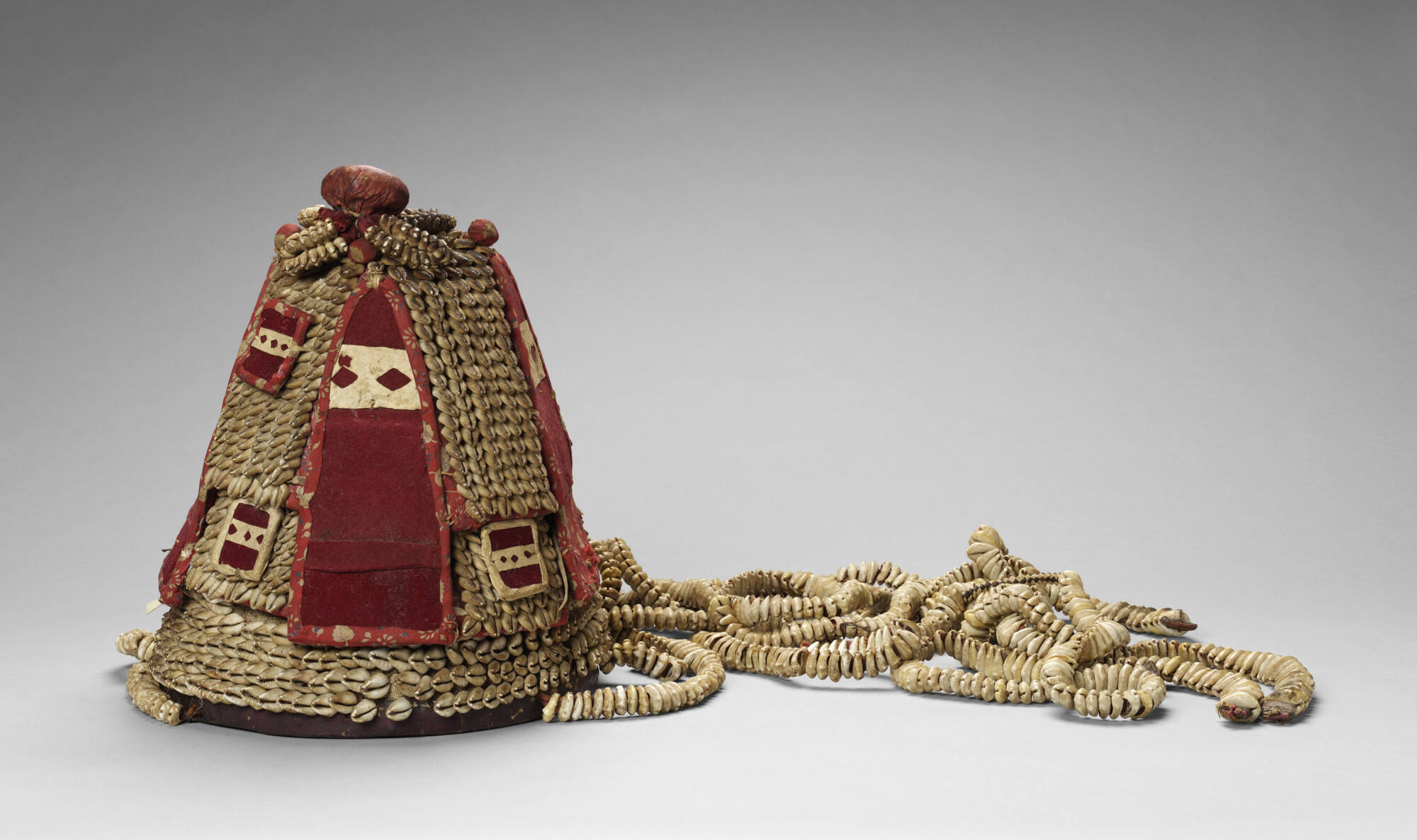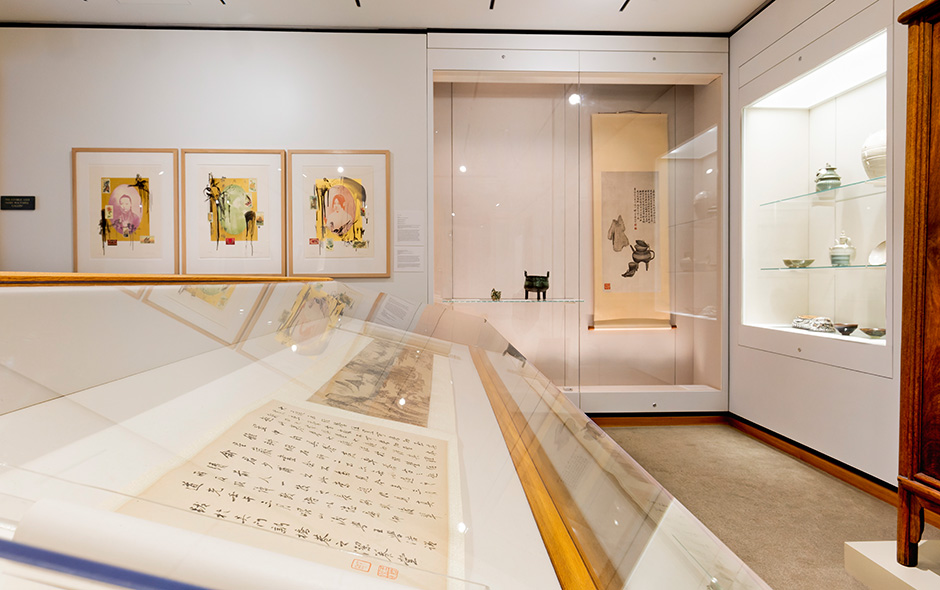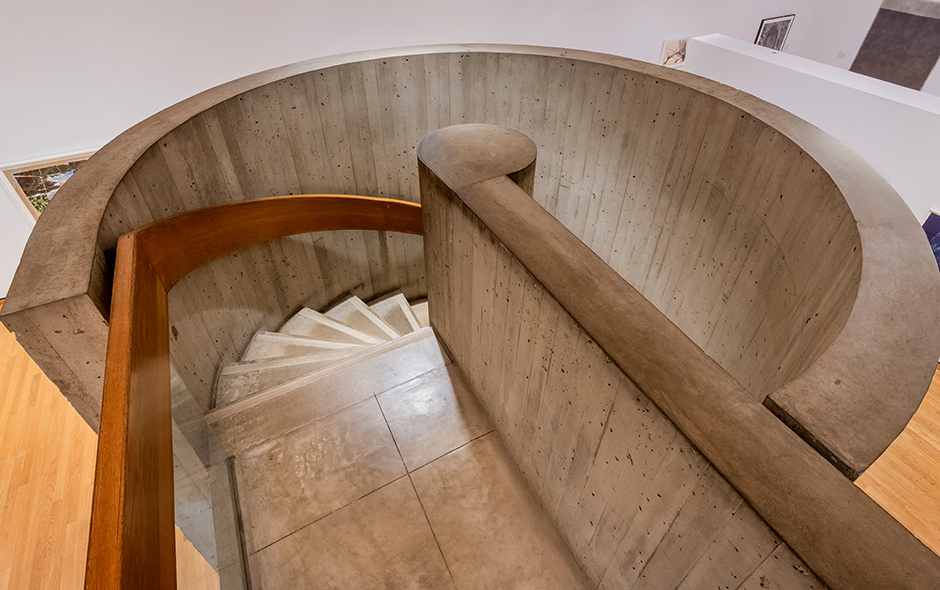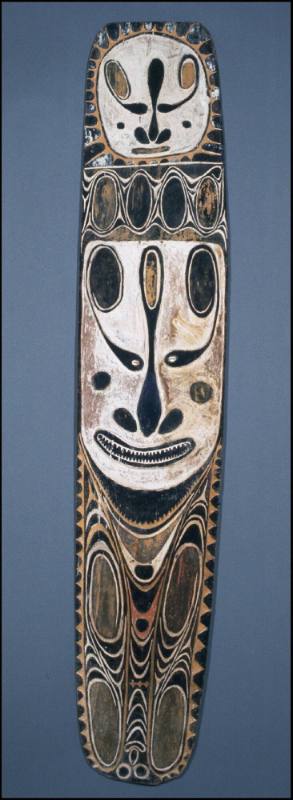
Object Details
Culture
Nigeria, Yoruba people
Medium
Cowrie shells, fabric, and leather
Dimensions
15 x 11 1/2 x 11 1/2 inches (38.1 x 29.2 x 29.2 cm)
Credit Line
Gift of William W. Brill
Object
Number
89.015.009
BRIEF DESCRIPTIONThis cloth and leather cylinder is called an ile ori, which literally means, “Hou(…)
BRIEF DESCRIPTIONThis cloth and leather cylinder is called an ile ori, which literally means, “House of the Head.” This container traditionally holds an ibori, a small cone-shaped object constructed of fabric, beads, and symbolic materials. The ibori represents an individual’s inner spiritual essence.WHERE WAS IT MADE?This was made in the southwest of Nigeria, where the Yoruba people live.HOW WAS IT USED?The ile ori is a receptacle for an ibori, a small cone-shaped object constructed of fabric, beads, and symbolic materials. The ibori represents an individual’s inner spiritual essence. In addition to the ibori, the ile ori contains various elements associated with one’s ancestors, gods, and the restrictions or taboos that one must abide by. To properly tend to and guide the spiritual power in one’s life, the owner of an ibori provides for it with daily sacrifices and gifts.WHY DOES IT LOOK LIKE THIS?The ile ori symbolizes the wealth and well being of an individual. Notice the many cowrie shells decorating and strung from the shrine. These represent not only substantial monetary wealth, but also the high esteem in which the person was held. Small leather and fabric amulets attached to the ile ori contain powerful substances that reinforce the spiritual power of the head in Yoruba culture. The head links an individual to the otherworld. Many religious practices and objects used by the Yoruba refer to the importance of the head. The conical shape of the ile ori is symbolic of the Yoruba people and their place in the universe. Rendered two-dimensionally, the cone becomes a triangle. Triangular forms have special significance in Yoruba visual culture. The triangle is linked to the Yoruba creation myth: earth was spread on a body of water, creating a cone where both human life and ashe, the life force in all things, began.The abstract qualities of the ibori, which represent the less tangible and abstract concept of the inner person, contrast with Yoruba representations of the outer self, which are fairly realistic.Deborah Chang ’09, conducted research for this description.












